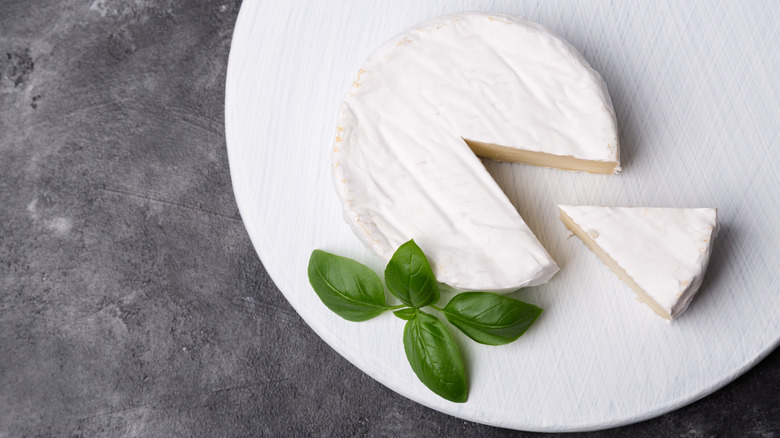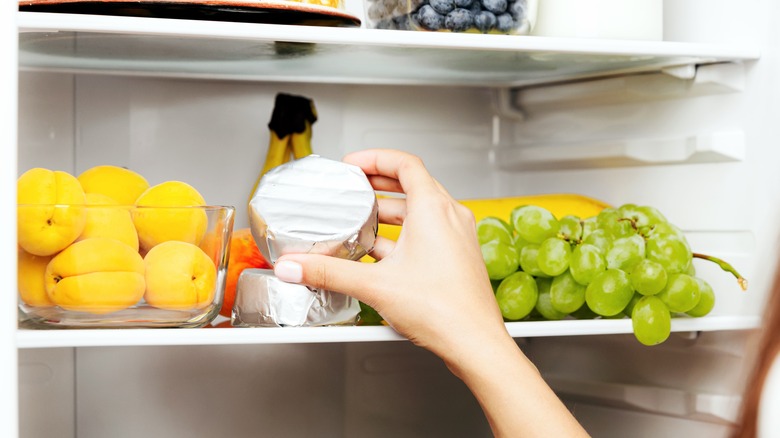Here's How Long Your Brie Stays Good For After Opening
Brie cheese is one of the softest, most luscious treats out there, whether you enjoy it baked with crescent roll dough and jam, or by the slice, with crackers and prosciutto (you should always eat the rind, too). There are plenty of ways to use this versatile cheese, and it lends itself well to the perfect picnic basket spread, but what if you don't use it all at once? How long will it keep?
Opened brie will stay good for up to a week in the fridge, provided it is repackaged properly. This means giving it two layers of protection: First, wrapping it in plastic wrap or parchment paper, and then transferring it to something airtight, like a plastic container with a lid or even a plastic resealable bag. You could also, for the second layer, use a sheet of aluminum foil. Then, place it in the fridge, but not where you might think; your first instinct might be to store it in the meat and cheese drawer that many fridges come with, but it will actually do better in the crisper drawer. Unfortunately, unlike hard cheeses, soft brie does not freeze very well.
How to know if your brie is spoiled
Since brie doesn't have a very long shelf life once opened, it's important to recognize the signs of spoilage so you don't inadvertently eat bad cheese. The first indication that your brie has turned is the smell. As soon as you open it up, if you smell a strong ammonia or a stinky or funky odor, you can bet that your cheese has begun to spoil, and you should toss it out.
If there's no smell (yet), your next sign is a change in color. The rind is typically white, while the cheese inside is normally a pale yellow, but if either starts to go gray or darken, it should probably go in the garbage. Likewise if the texture changes; the interior of the cheese should be soft, but if it starts to harden, or if the entire wheel develops a slime, it's a no-go.
Finally, the appearance of mold is a huge indicator that your brie is spoiled. While it's true that with some cheeses you can simply cut off the offending part and eat the rest, that is not the case with soft cheese like brie. Mold on the surface of the cheese means that the roots and spores have probably spread all throughout.

